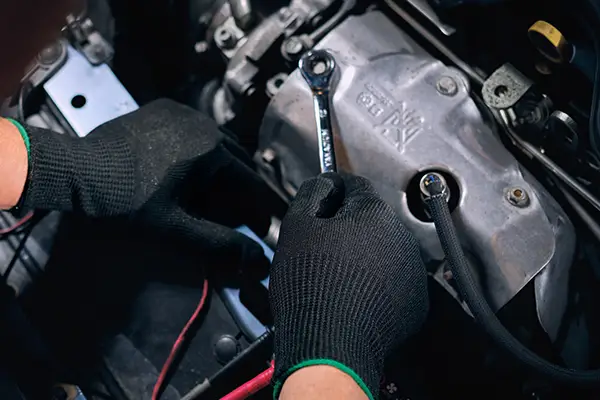 Bullsafety general purpose gloves
Bullsafety general purpose gloves
General purpose gloves are essential for a wide range of tasks, offering protection while maintaining dexterity. These gloves are versatile and commonly used across various industries1. But what exactly are they, and why are they so important?
General purpose gloves are versatile protective gloves designed for a range of tasks, offering basic protection without compromising dexterity. What are general purpose gloves?2
Many people wonder what these gloves are used for, how they are made, and what types are available. In this post, we’ll dive into these common questions to give you a clear understanding of general purpose gloves.
What are General Purpose Gloves Used For?
General purpose gloves are commonly used for tasks where basic protection is needed, such as light construction, warehouse work, and handling materials. Their flexible nature makes them ideal for handling various tools and materials.
General purpose gloves are used for light-duty tasks like warehouse operations, construction, assembly work, and more.
 Nitrile-coated gloves are ideal for car repairs. They are oil-resistant, lightweight, and provide excellent grip, making them the best choice for mechanics.
Nitrile-coated gloves are ideal for car repairs. They are oil-resistant, lightweight, and provide excellent grip, making them the best choice for mechanics.
How to Choose the Right General Purpose Gloves for Your Tasks
Choosing the right general purpose gloves depends on the specific tasks you need to perform. For example, workers in construction may need gloves with extra grip and resistance to abrasions, while those in assembly work may prioritize comfort and flexibility. Understanding your specific needs will help you make the right choice.
Common Uses for General Purpose Gloves:
| Industry | Tasks | Key Features Needed |
|---|---|---|
| Construction | Handling tools, building materials | Abrasion resistance, grip |
| Warehousing | Stacking, sorting goods | Flexibility, comfort |
| Assembly Line | Small parts handling, light-duty tasks | Dexterity, comfort |
| Gardening | Light garden work, planting | Durability, grip |
What are General Purpose Gloves Made Of?
General purpose gloves are made from a variety of materials depending on the protection needed. Common materials include latex, nitrile, polyurethane, and vinyl. These materials provide different levels of comfort, flexibility, and protection.
General purpose gloves are often made from latex, nitrile, or polyurethane, offering various levels of protection and comfort.

Material Breakdown of General Purpose Gloves
- Latex – Known for its excellent elasticity and comfort. Great for general tasks that require dexterity but less resistant to punctures.
- Nitrile – Offers higher resistance to chemicals and punctures, ideal for industrial settings.
- Polyurethane – Provides a balance of comfort and dexterity, often used for light tasks.
- Vinyl – The most economical choice, suitable for light tasks where chemical resistance is not needed.
| Material | Pros | Cons |
|---|---|---|
| Latex | Comfortable, flexible, affordable | Can cause allergies |
| Nitrile | Puncture and chemical-resistant | Less comfortable than latex |
| Polyurethane | Durable, offers excellent dexterity | Less resistant to chemicals than nitrile |
| Vinyl | Cost-effective, ideal for low-risk tasks | Less durable, not suitable for heavy-duty work |
How Many Types of General Purpose Gloves?
There are several types of general purpose gloves, each designed to meet specific needs. These include coated gloves, disposable gloves, and uncoated gloves. Each type has its own advantages depending on the task.
The types of general purpose gloves include coated, uncoated, and disposable gloves, each suited for different applications.
Understanding Different Types of General Purpose Gloves
- Coated Gloves3: These gloves have a layer of coating (nitrile, latex, or polyurethane) for added protection. They are ideal for tasks that require grip and some level of chemical protection.
- Uncoated Gloves: These gloves offer more flexibility and breathability, making them ideal for light-duty tasks.
- Disposable Gloves: These are used for single-use applications and are commonly made of latex or nitrile. They are ideal for medical, cleaning, and food handling industries.
| Type | Best For | Advantages | Disadvantages |
|---|---|---|---|
| Coated Gloves | General labor, construction | Better grip, chemical resistance | Less flexibility |
| Uncoated Gloves | Light-duty, handling small parts | High flexibility, breathable | Less protection |
| Disposable Gloves | Medical, food handling, cleaning | Sanitary, affordable | Not reusable |
Conclusion
General purpose gloves are versatile, made from various materials, and come in different types to suit different tasks. Whether you need protection for construction, assembly work, or light-duty tasks, these gloves are an essential part of many industries.
- Clicking this link will explain the role of gloves in various industries, highlighting their use and safety standards. ↩
- This link will provide a detailed explanation of what general purpose gloves are, their typical uses, and how they differ from other protective gloves. ↩
- This will tell you the history of coated gloves. ↩



